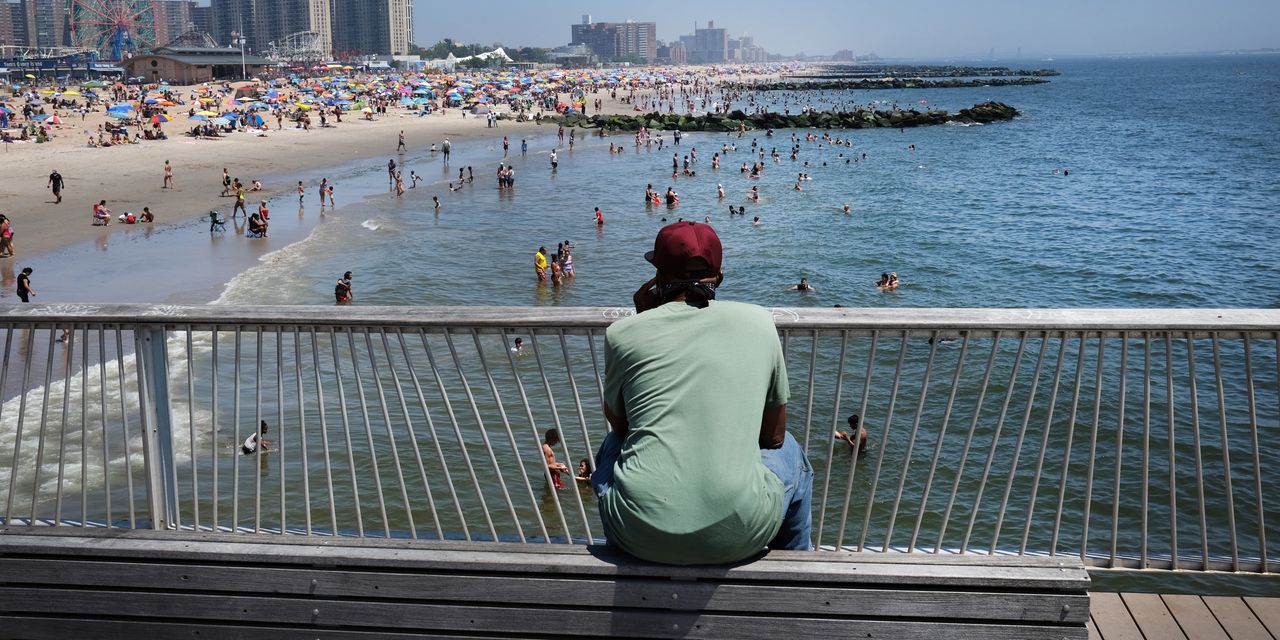Heat waves are scorching the U.K. and Europe, while 60 million Americans are bound for temperatures above 100 degrees this week.
Everyone is sweating it — just not equally. The way a person experiences extreme heat is at least partially linked to race, class and what neighborhood they can afford to live in, research shows.
Lower-income, disproportionately Black and Latino neighborhoods caught in urban “heat islands” are often at the sweltering focal point of extreme heat, studies suggest. These pockets of intense heat can peak at 15 to 20 degrees Fahrenheit hotter than nearby locations, due to factors including the prevalence of impermeable, heat-absorbing pavements and the dearth of trees and shade.
Related: The top U.S. cities labeled as dangerous ‘heat islands’ include a few small-population surprises
For three-quarters of the country’s counties above a certain size, the poorest neighborhoods and those with higher shares of people of color were “significantly hotter than the richest” and more white areas, University of California, San Diego researchers said in an article published last year in the journal Earth’s Future.
“The disproportionate heat surface exposures faced by minority communities are due to more built-up neighborhoods, less vegetation, and — to a lesser extent — higher population density,” they wrote after combining census data with urban temperature records.
“Previously redlined neighborhoods were a lot hotter than neighborhoods without redlining in their past.”
These heat disparities have to do with landscapes and city planning, but also flow from the continuing consequences of racist housing policies formally outlawed half a century ago. “Redlining” cordoned neighborhoods of color away from financial services like government-backed mortgages. The 1968 Fair Housing Act banned the practice, though studies show it persists today.
Meanwhile, a 2020 article in the journal Climate found that previously redlined neighborhoods were a lot hotter than neighborhoods without redlining in their past. There could be a roughly five-degree difference between once-redlined and never-redlined communities, they noted.
Heat disparities were even wider in some areas: It was more than 12 degrees hotter in certain once-redlined portions of Portland, Ore., Denver and Minneapolis compared to city neighborhoods that were never redlined, the researchers said.
A separate 2021 study traced the link between redlining and present-day air pollution. Black and Latino people, more often than their white counterparts, share zip codes with industrial areas belching emissions, researchers wrote in the study published in the journal Environmental Science and Technology Letters.
As temperatures rise, price inflation continues to run red-hot — and its effects are also felt unequally.
In June, the overall cost of living increased 9.1% year over year. That’s a new 41-year high, but inflation rates for energy costs have been even steeper. The cost of electricity — to power fans and air conditioners, among other items — increased 13.7% year over year in June, according to the Bureau of Labor Statistics.
And polling has shown inflation putting a deeper strain on people of color. “There’s no question that Black families are facing substantially higher inflation rates these days,” one economist recently told MarketWatch about the ways white and Black households have grappled with volatile prices in recent years.
Read more: Why you, and your wallet, must get used to heat waves
